 First Comics News: When did you become a wresting fan?
First Comics News: When did you become a wresting fan?
Nick Barber: I’ve gone through a few different phases. I first got into it as a kid through the 1980s WWF Superstars era then back into it with the 1990s Attitude Era and back again through CM Punk and back yet again with Kevin Owens. That said, in between the Attitude Era and Punk’s run I got into the wider scope of professional wrestling — the indies and international circuits like ECW, New Japan, Ring of Honor and Portland’s DOA Wrestling in specific.
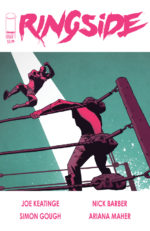 1st: Who are your favorite wrestlers?
1st: Who are your favorite wrestlers?
Nick: Mick Foley is my all-time favorite wrestler, but CM Punk and most recently Kevin Owens are up there with him.
1st: What similarities do you see between comics and wrestling?
Nick: That’s partially what inspired the book. Not just between comics and wrestling, but wrestling and any sort of marketed art. The fact there are real people behind the in-ring characters and even more real people behind them booking matches, doing their accounting, writing their theme music, doing their accounting. All those people have lives which are massively affected by what plays out in the fictions they’re selling. I find that idea really interesting and its a big part of the series.
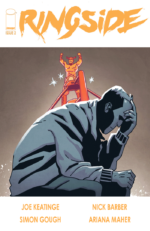 1st: What type of research have you put into Ringside?
1st: What type of research have you put into Ringside?
Nick: Part of its something I’ve been “researching” for my entire life, but when it came time to develop Ringside I made a conscious effort to go from being a fan of this thing, to someone who was examining what it actually is. That said, I’ve never had any interest in the gossip sheets. This isn’t some type of expose. But even still, there’s reading a lot of biographies, sure, consulting with some people, yeah, but the biggest part is continuing to go to events and keep an eye out. And that’s the thing, I’m not limiting any of that to wrestling. A lot of it goes into seeing how other industries work. My first hand experience in working in a creative industry for over a decade — whether it was in scheduling, printing, distribution, printing, editorial, writing and most recently retail. There’s a lot that corresponds, a lot that doesn’t, but the venn diagram of what lies between always fascinated me.
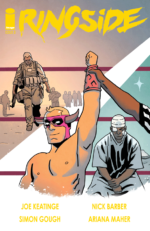 1st: You said “I’m not trying to make Ringside seem like some Smark attempt at ‘THIS IS WHAT THE INSIDE’S LIKE.’”what is Ringside?
1st: You said “I’m not trying to make Ringside seem like some Smark attempt at ‘THIS IS WHAT THE INSIDE’S LIKE.’”what is Ringside?
Nick: I’m very conscious of the fact that I’m writing about what’s very much an understandably closed community, so I’ve been methodical from day one to approach this as a fictional drama with respect to the real woman and men who do what we’re fictionalizing. It’s a tight rope balance and I hope we don’t let anyone down there.
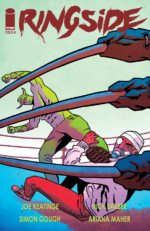 1st: Wrestling is booming now with a lot of different companies getting TV deals, is this a fictitious version of the WWE or one of the smaller promotions?
1st: Wrestling is booming now with a lot of different companies getting TV deals, is this a fictitious version of the WWE or one of the smaller promotions?
Nick: Absolutely not. The companies in Ringside are not specifically based on any one company or another. It’s a completely fictionalized and dramatized world.
1st: Do you have to love wrestling to enjoy this comic or will have appeal to comic fans who aren’t wrestling fans?
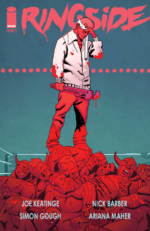 Nick: No, my hope is people enjoy the series whether they’re familiar with wrestling or have never seen a match in their lives.
Nick: No, my hope is people enjoy the series whether they’re familiar with wrestling or have never seen a match in their lives.
1st: What makes Ringside so cool no comic fan should miss it?
Nick: There are a lot of other wrestling comic books out there, through out its history and currently, but there’s nothing like Ringside.
